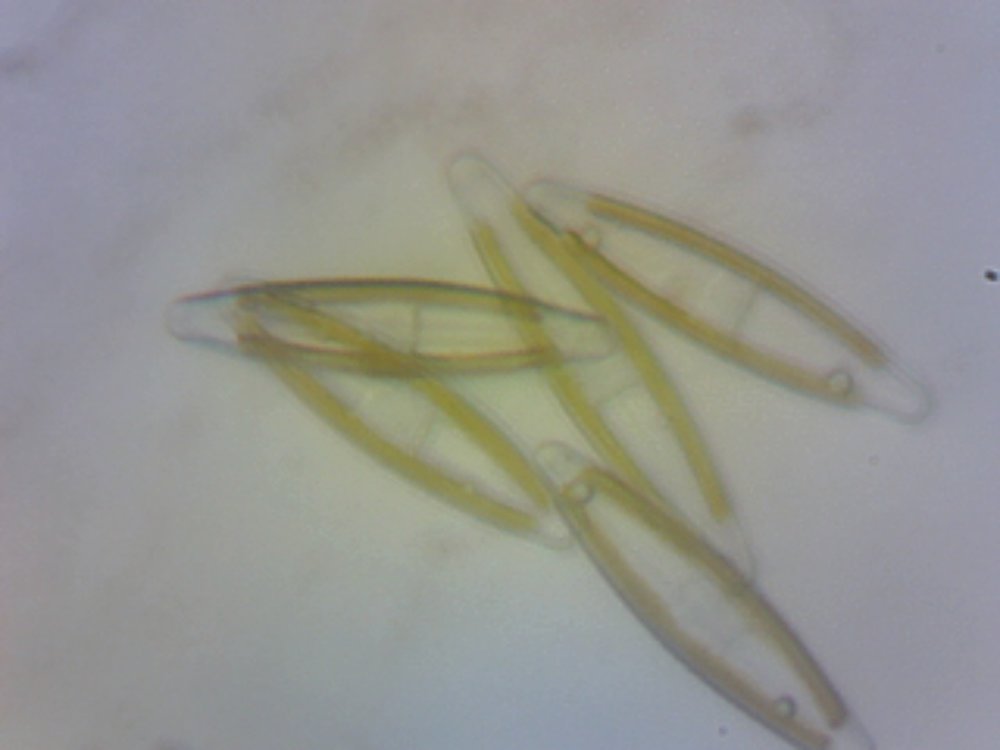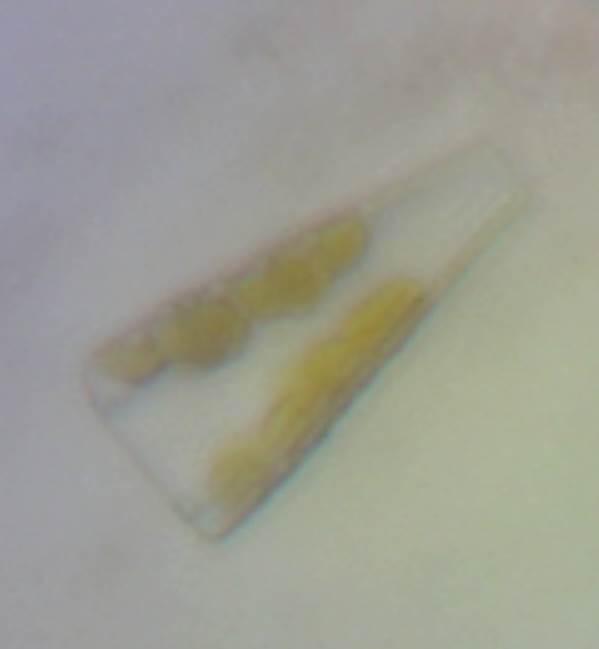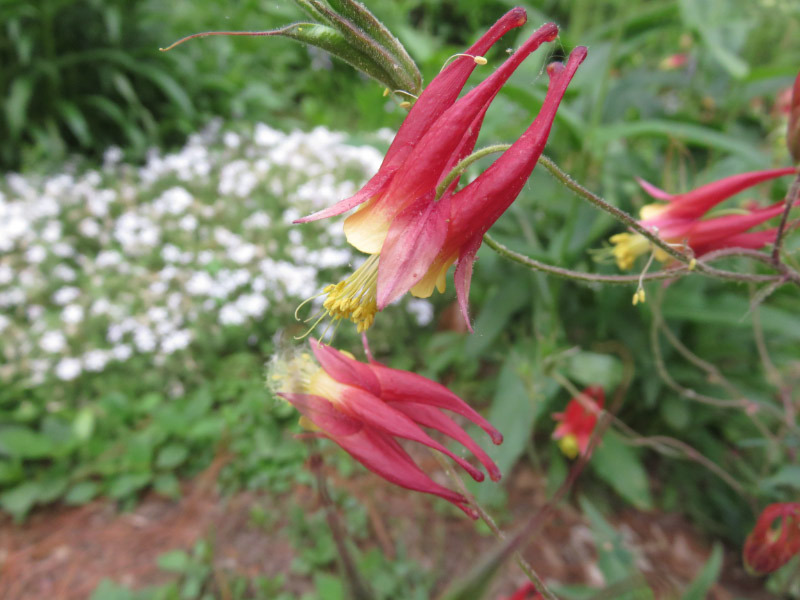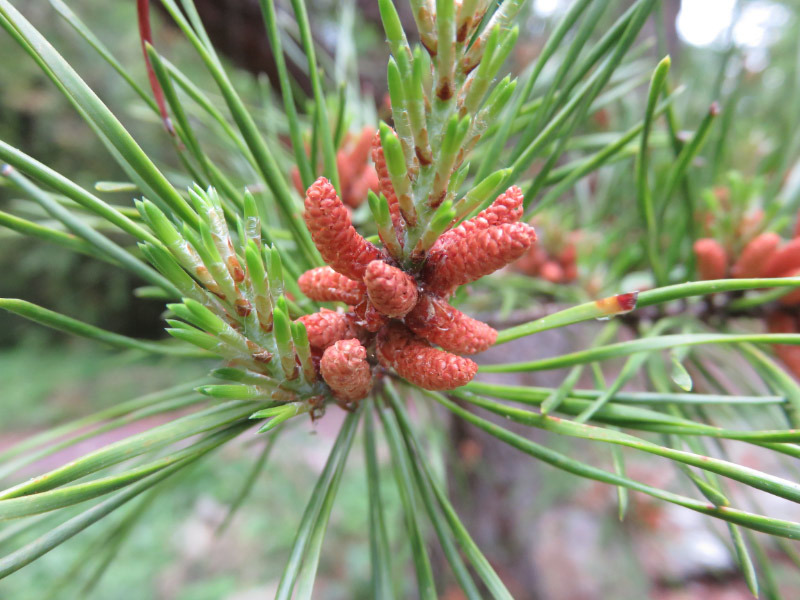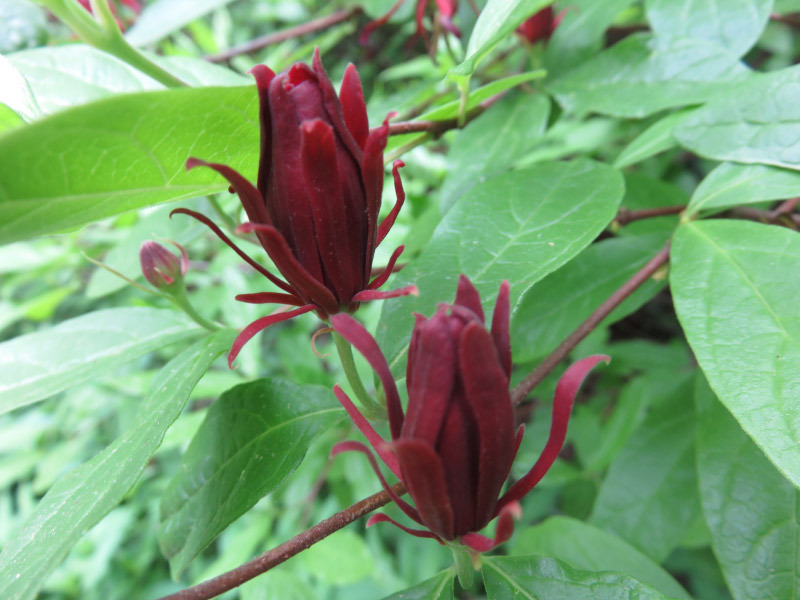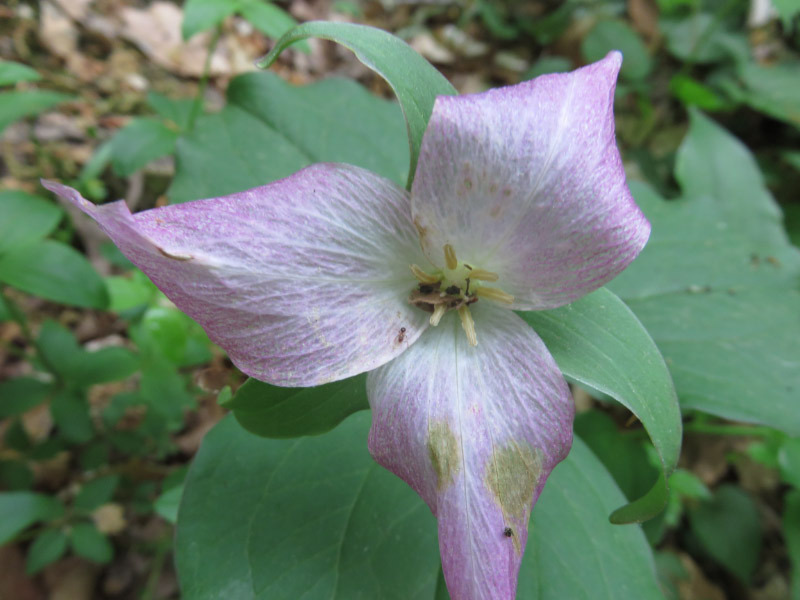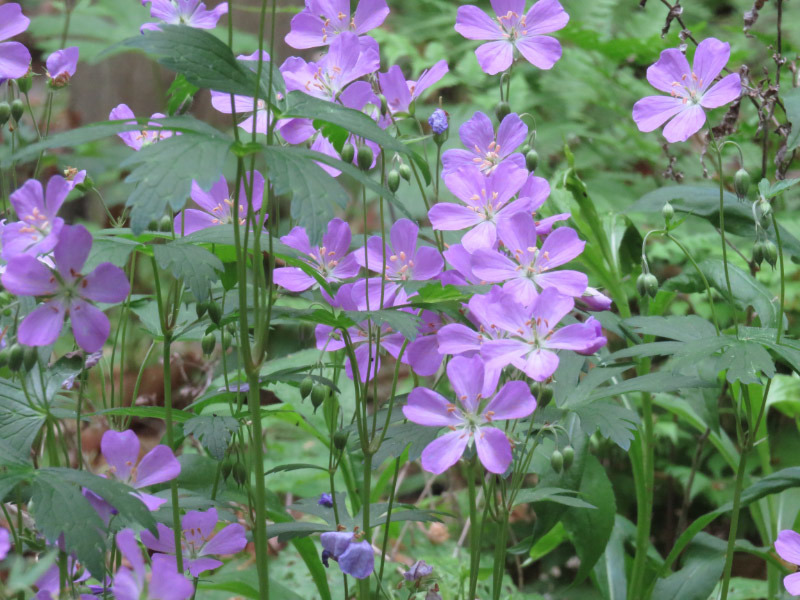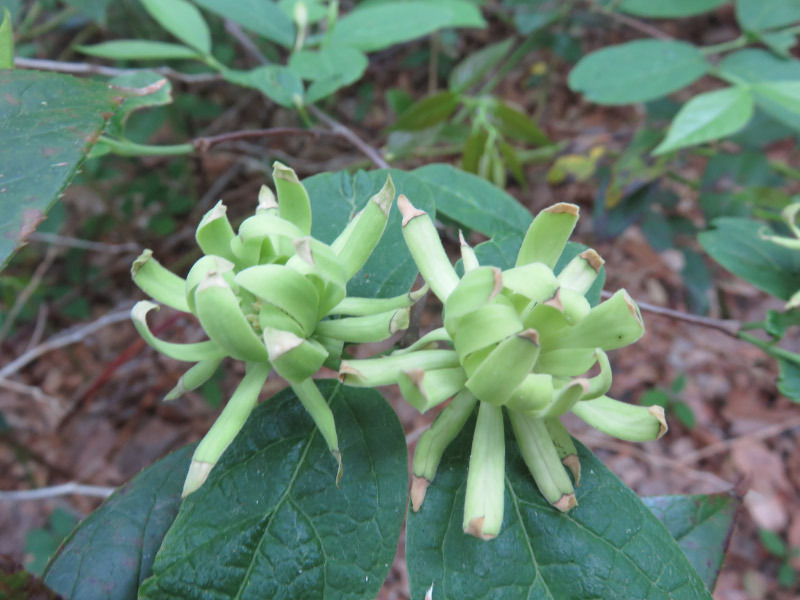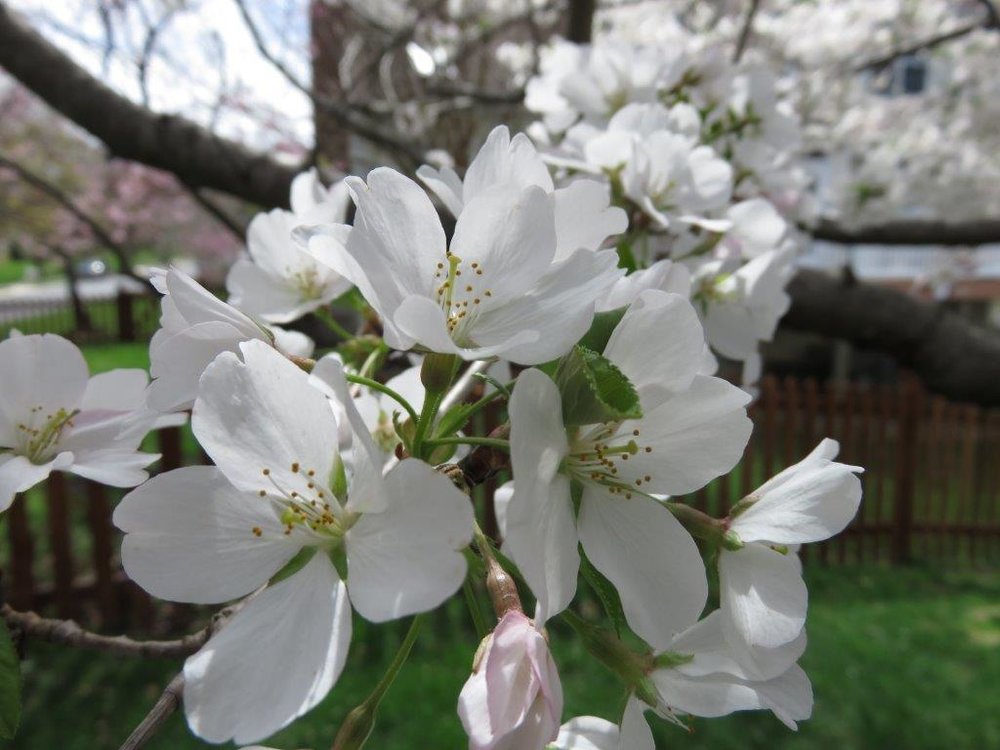Last Wednesday was the 6th of eight days of training to become a Master Naturalist in Maryland. We managed to go out for a short history walk at Belmont before the rain started. I noticed a lower branch of the English Elm on the slope in front of the house and got this close up of the buds.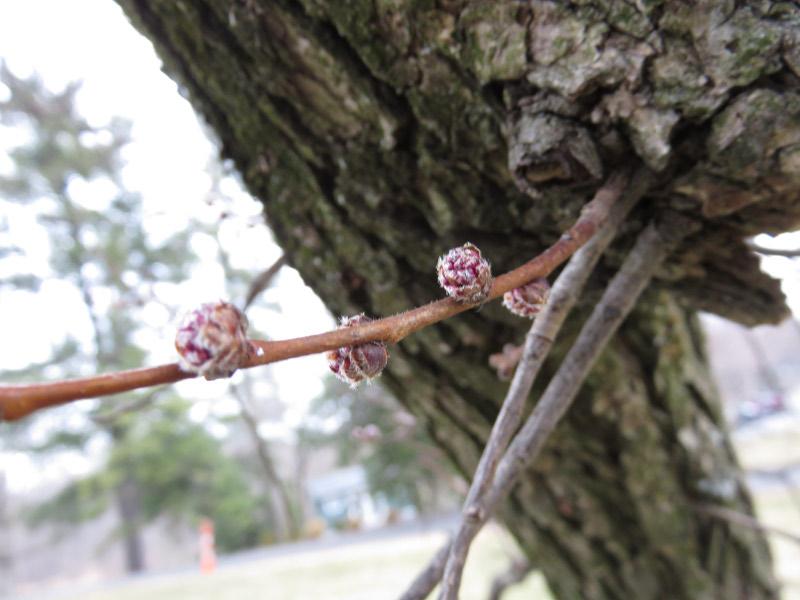
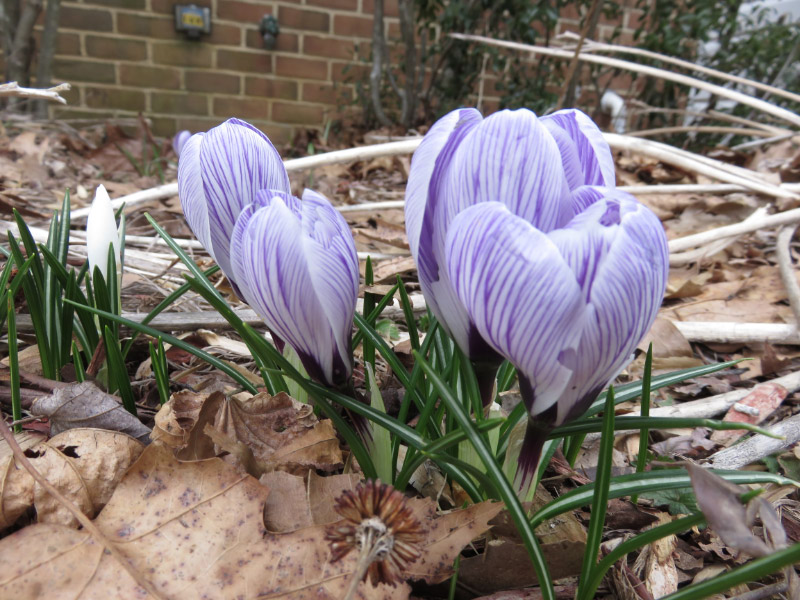 Back inside we talked about native and invasive species in Maryland. I’m motivated to think about planting some ‘natives’ at the edge of the forest behind our house. The area has a lot of deer traffic so I may have to protect whatever I plant. We have big trees but not many samplings because of the heavy browsing. I am starting with two items in a two small areas: ferns in the dampest area of the yard and a spicebush or service berry or winterberry to provide a shrub or understory level plant in the area where it has gotten too shady for grass to grow well. I still love the crocus, snowdrops and daffodils in the spring - even though they are non-native. Our neighbor has an expanding clump of daffodils at the edge of the woods and I enjoy them every spring. Maybe I’ll plant some bulbs next fall around my young understory tree.
Back inside we talked about native and invasive species in Maryland. I’m motivated to think about planting some ‘natives’ at the edge of the forest behind our house. The area has a lot of deer traffic so I may have to protect whatever I plant. We have big trees but not many samplings because of the heavy browsing. I am starting with two items in a two small areas: ferns in the dampest area of the yard and a spicebush or service berry or winterberry to provide a shrub or understory level plant in the area where it has gotten too shady for grass to grow well. I still love the crocus, snowdrops and daffodils in the spring - even though they are non-native. Our neighbor has an expanding clump of daffodils at the edge of the woods and I enjoy them every spring. Maybe I’ll plant some bulbs next fall around my young understory tree.
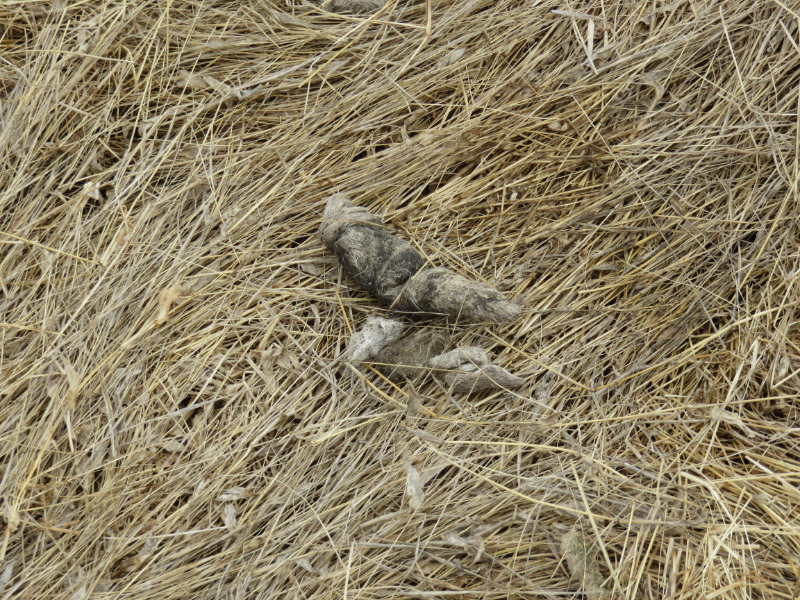 In the afternoon the topic was fish. After a short lecture we did several classification exercises with various fishes on newspaper. I appreciate that gloves were provided…and that my pen worked just find to spread the fins and open the mouth! We headed out to the pond; it was cold and we did not get a single fish in the net although we did recognize scat (from our week 3 lecture on mammals). This one had a lot of hair - so a predator - and too big for fox - so probably a coyote. They seemed to frequent the area around the pond.
In the afternoon the topic was fish. After a short lecture we did several classification exercises with various fishes on newspaper. I appreciate that gloves were provided…and that my pen worked just find to spread the fins and open the mouth! We headed out to the pond; it was cold and we did not get a single fish in the net although we did recognize scat (from our week 3 lecture on mammals). This one had a lot of hair - so a predator - and too big for fox - so probably a coyote. They seemed to frequent the area around the pond.
I also got some images of the bald cypress from the other side of the pond. See the people to the right of the tree…for scale.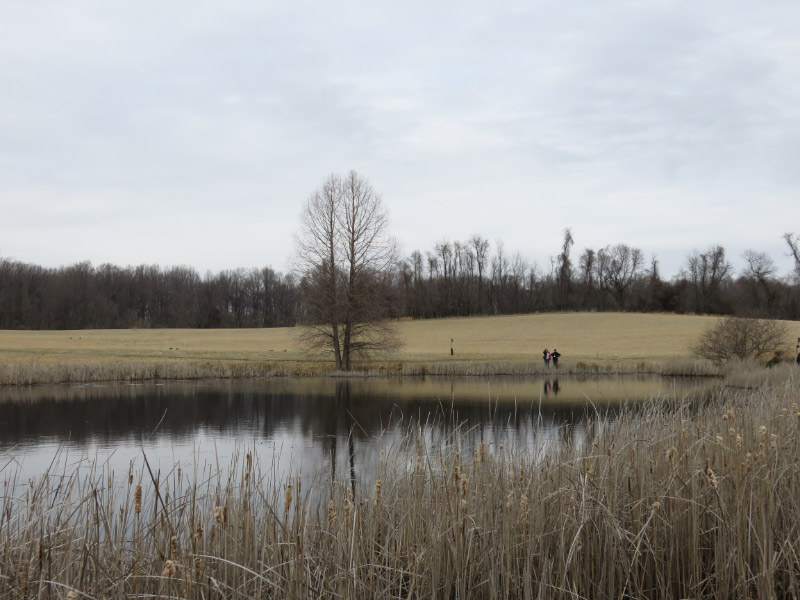
Also near the pond are some trees that were planted in protective tubes that seem to be thriving. One had a delicate birds nest from last summer. The ornithology segment of the course is part of the last class.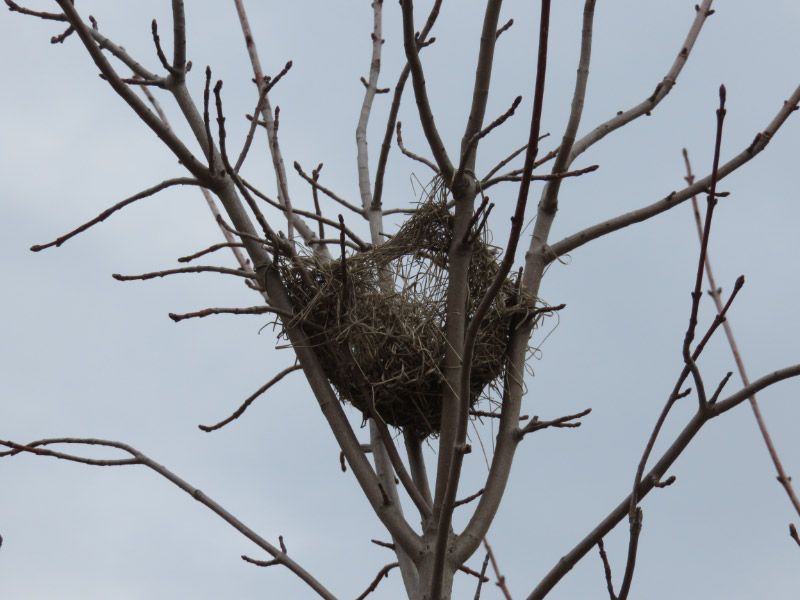
I did some follow-up work at home from the week 4 lecture on microbes. I made a spore print with a baby bella mushroom I had from the grocery store. It is an easy process: 1) remove any remaining veil covering the gills on the underside of the mushroom and the stem 2) turn it gills down on a piece of paper 3) cover it with an upside down bowl to keep it from disturbed 4) come back in 12+ hours, carefully remove the bowl and mushroom…the spore print will be on the paper. I was surprised at how much moisture the mushroom leaked onto the paper…next time I’ll not used paper that has printing on the other side!
Another follow-up was from week 5. When we went to the stream - we scraped the rocks with a toothbrush and kept the sample of watery debris in the refrigerator for a week. There was no compound microscope in the building for week 6 as originally planned so I took the sample home to look at with my microscope. And there were living diatoms in the sample! I same two different kinds right away….and will look again sometime this weekend.